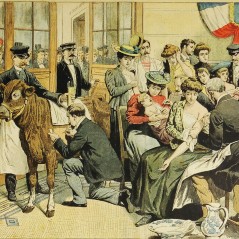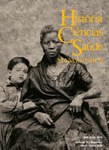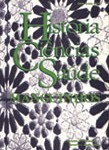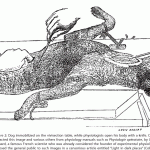
Advertisement for medicinal drops to relieve toothache, Lloyd Manufacturing Co., 1885
Courtesy National Library of Medicine.
Mind-altering drugs have been used throughout the history of America. While some remain socially acceptable, others are outlawed because of their toxic, and intoxicating, characteristics. These classifications have shifted at different times in history, and will continue to change.
The transformation of a particular drug, from an acceptable indulgence to a bad habit, or vice versa, is closely tied to the intentions of those endorsing its use, and their status in society. This online exhibition, available at the website of the US National Library of Medicine, explores some of the factors that have shaped the changing definition of some of our most potent drugs, from medical miracle to social menace.
The digital gallery for Pick Your Poison features a selection of digitized texts from the collections of the National Library of Medicine. They are available online in their entirety or as excerpts, and offer insight into the scientific and medical theories and practices of their corresponding times.

Cannabis Fluid Extract, U.S.P., Parke, Davis & Co., 1933
Courtesy National Museum of American History.
For related articles in Portuguese, see:
Barreto, Ivan Farias. “The use of coca leaves in traditional communities: perspectives in health, society, and culture.” Hist. cienc. saude-Manguinhos [online]. 2013, vol.20, n.2, pp. 627-641. ISSN 0104-5970.
Renders, Helmut. “Alcohol consumption as portrayed in William Hogarth’s prints Beer Street and Gin Lane and in the works of John Wesley: similarities and differences.” Hist. cienc. saude-Manguinhos[online]. 2012, vol.19, n.4, pp. 1191-1218. ISSN 0104-5970.
Santos, Fernando Sergio Dumas dos and Verani, Ana Carolina “Alcoholism and psychiatric medicine in early twentieth-century Brazil” Hist. cienc. saude-Manguinhos, Dez 2010, vol.17









